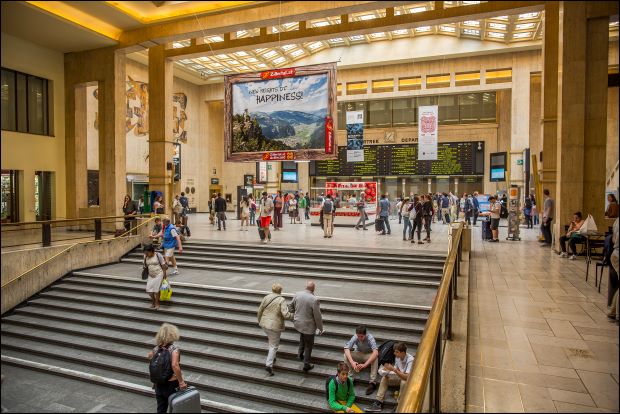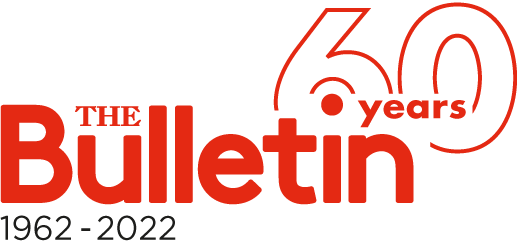- Daily & Weekly newsletters
- Buy & download The Bulletin
- Comment on our articles
Art Deco Brussels unveils its programme: "A real year of discovery of an exceptional heritage"
The Brussels region has unveiled its programme for Art Deco Year 2025, the centenary celebration of the influential style movement.
Characterised by geometric shapes, bold colours and lavish ornamentation, it is a style that symbolised modernity and progress.
Art Deco was a distinct departure from the intricate designs of its predecessor Art Nouveau, although it was shaped by the latter’s emphasis on craftmanship and decorative arts and penchant for fluid lines and organic forms.
The movement emerged at the 1925 International Exhibition of Modern Decorative and Industrial Arts in Paris, a pivotal event that first coined the new emerging style as ‘Art Deco’. If France was the epicentre, the style quickly spread internationally, including the United States where designers embraced its modern aesthetic.

One hundred years later, the year-long event in Brussels is an opportunity for local residents, Belgians and international tourists to discover the capital’s own treasure trove of Art Deco buildings.
Visits, exhibitions, conferences and activities honour this architectural heritage, which was particularly applied to public buildings, as well as its singular decoration and furniture. There are also events exploring the context of the movement as it was set against a period of both growing social freedom and economic turmoil.
Presenting the programme at Bozar, itself an example of Art Deco style, Brussels secretary of state for urban planning and heritage Ans Persoons (Vooruit) said: “We will allow Brussels residents and visitors to discover how this movement came about, how it shaped society in the 1920s and 1930s and how Art Deco still defines our streetscape today. It will be a real year of discovery for this exceptional heritage.”

Landmarks in the capital include Stoclet Palace, the Flagey building (main image), the Basilica of Koekelberg, the Van Buuren Museum and Gardens (pictured above) and the town hall of Forest. Visitors will also be able to explore Villa Empain, the Maison Autrique in Schaerbeek and Halles Saint-Géry. Among lesser-known architectural sites are the Tenaerts House, the Hôtel Riez, the UGC de Brouckère and its Eldorado room, the House of European History in Parc Léopold and the Sainte-Suzanne church in Schaerbeek.
Many of these buildings will open their doors during the annual BANAD Festival (Brussels Art Nouveau Art Deco) from 15 to 30 March. For 2025, 90% of its programme will be composed of sites from the period. Later in the year, the autumn Heritage Days adopts the theme "Art Deco - Roaring Twenties, Crash Years".
The public can access some of the sites via the Art Nouveau Pass, which is evolving to become the Art Nouveau - Art Deco Pass. It will include several Art Deco buildings in the capital, in addition to the existing nine Art Nouveau locations.

The programme also features 14 exhibitions on various themes that are staged across Brussels, while guided tours are organised by associations such as ARAU, Arkadia, the Brussels Art Deco Society and Pro Vélo.
Art Deco Year is coordinated by Paul Dujardin and co-organised by urban.brussels and visit.brussels. “With this programme, we aim to build on the dynamics of the very successful Art Nouveau year by offering Brussels another exceptional cultural experience,” said Dujardin.
Indeed, the region is hoping to replicate the success of the Art Nouveau centenary that attracted more than two million visitors in 2023.

Beyond conjuring up the perceived glamour and gratuitous excess of the jazz age, Art Deco is one of the few decorating styles to have had an enduring impact on style trends. Although its demise tends to be dated to the outbreak of World War Two in 1939, modernist elements of the movement remain popular in contemporary design today.
Full details of the programme can also be found on the visit.brussels website.
Photos: (main image) Place Eugène Flagey ©visit.brussels/Jean-Paul Remy; Brussels central station; ©visit.brussels/Eric Danhier; Van Buuren House ©visit.brussels/Jean-Paul Remy; Kaaitheater ©ADT-ATO-Reporters/Eric Herchaft; Taverne_Espérance ©visit.brussels/Jean-Paul Remy



















